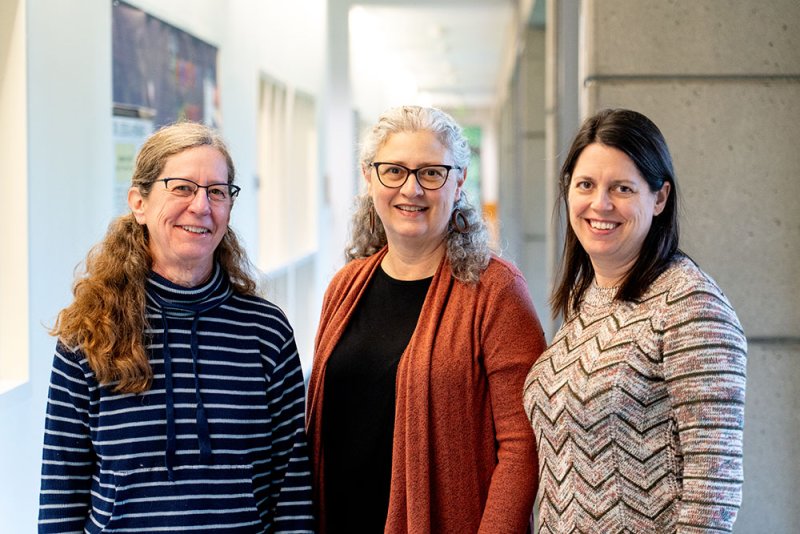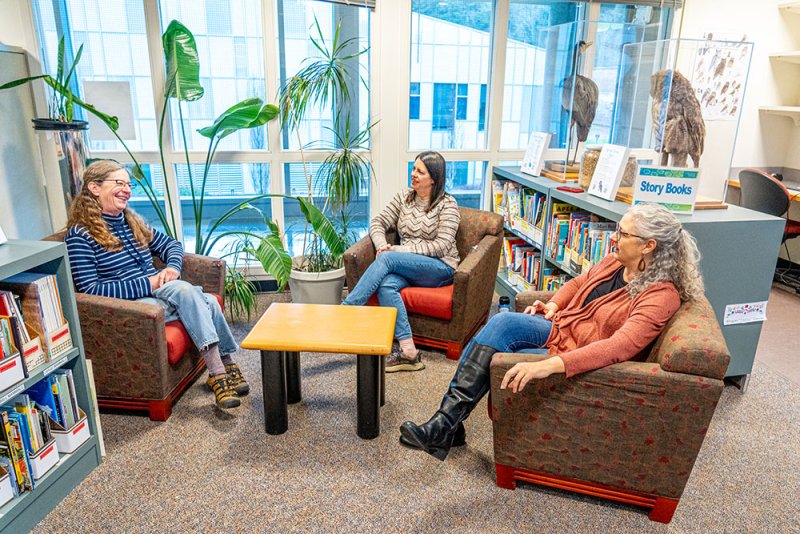SMATE faculty reel in $1.4 million NSF grant to help boost science teaching in local elementary schools
Western Washington University’s Emily Borda, Tracy Coskie and Shannon Warren are collaborating on a $1.4 million National Science Foundation-granted project, Science Education for Equity in K-6 or “SEEK.”
The program will work with in-service elementary school teachers in Whatcom and Skagit counties to help build a community of teacher-leaders focused on integrating science into K-12 education. SEEK will run for five years with the hope to establish long-term science leadership programs within each school. Sixteen elementary schools across the Bellingham School District, Mount Vernon School District, Nooksack School District and Sedro-Woolley School District have been identified as having both high-need and high-excitement for science instruction.
This conversation is all about centering students and their communities in the science. We want students to see themselves as part of science in the future, whether as a professional or as an informed citizen.
Emily Borda
“Our hope is that in each school we will build a culture of equitable and high-quality science instruction and help develop the skills of the teachers inside those schools,” said Emily Borda, Western’s director of Science Math and Technology Education (SMATE).
There is a particular need for science education leadership because most elementary teachers teach in all subject areas and therefore must develop a level of expertise in each, Borda said.
According to Warren, SEEK will provide opportunities for continued professional development and collaborative planning to deepen teacher’s understanding of the conceptual framework for effective science instruction, Warren said.
“While content expertise is important for student learning, so is a deep understanding of pedagogy and the ability to design and implement courses structured so that all students can learn,” said Warren, who serves as the director of STEM Faculty Development and K12 Partnership.
Borda said equitable science means putting students at the center of science instruction and making science relevant to them and their communities.
“This conversation is all about centering students and their communities in the science. We want students to see themselves as part of science in the future, whether as a professional or as an informed citizen,” she said.
In many ways, students are already engaging with science on a daily basis by exploring the world around them, said Coskie, a WWU professor of Elementary Education and the director of Western's graduate program in Language and Literacy.
“Exploring the natural world is a motivating and engaging practice that helps us maintain our connection with our environment,” said Coskie. “When science education begins in preschool and elementary, children have the opportunity to see how science is relevant to them and to develop a sense of belonging in science — to understand that science is for everyone.”
SEEK is a collaboration with Western’s College of Science and Engineering and Woodring College of Education. The program is funded by the NSF’s Robert Noyce program, which is geared toward the recruitment and preparation of high-quality science teachers.
The partnership between SMATE and Woodring will help build and sustain high-quality relationships with teachers and principals, pulling on Warren’s experience building professional development programs and Coskie’s expertise in literacy education to create a strategy on how to integrate science education with literacy, Borda said.
“One of the things we have heard from teachers is that there is so little instructional time for science. The focus is often on math and reading, and if we are going to commit to teaching science, it needs to be integrated with other areas,” she said.
The link between science education and literacy is one that comes naturally, said Coskie.
“When students are investigating phenomena in the natural world, weather events for example, the work often involves discussions using evidence and reasoning, using text to build background knowledge and writing to record or share results,” she said. “All this talking, reading and writing provides opportunities to build students’ disciplinary literacy skills!”
The long-term goal of the project is to create a coherent approach to science education that allows for collaboration and learning opportunities for elementary teachers, community educators and educators in higher education.
“The vision of equitable, community-responsive STEM teaching that we are engaging with has not been realized across the nation, and we hope to demonstrate one approach that can make a difference,” Coskie said.

